
By:
- Scott LaFee
Published Date
By:
- Scott LaFee
Share This:
Stem Cell ‘Collaboratory’ Opens on UC San Diego Campus
New facility allows researchers from five institutions to work under one roof
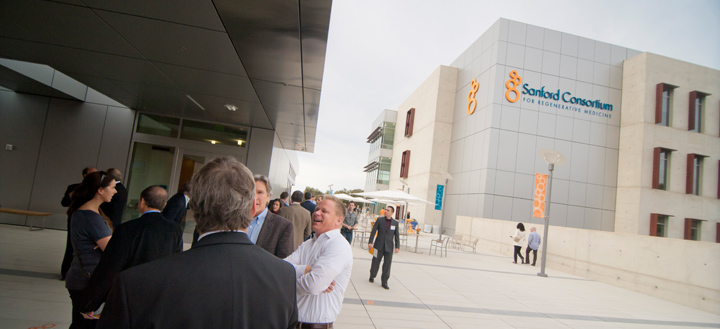
Photos by Erik Jepsen/UC San Diego Publications
Stem cells are tiny things, microscopic in fact. It’s the power of their pluripotency, their ability to become any kind of cell in the human body (and thus potentially fix almost any kind of human ailment) that makes them huge in the future of medicine.
By contrast, the new four-story Sanford Consortium for Regenerative Medicine building – dubbed a “collaboratory” – which celebrated its grand opening Nov. 29 – is indisputably massive: a $127 million, 150,000-square-foot modern edifice of glass and concrete perched above the Pacific Ocean and entirely dedicated to advancing and fulfilling the therapeutic promise of stem cells.
The consortium opened its doors with a ribbon-cutting ceremony involving dozens of local officials, scientists, and patient advocates. But more than just a celebration of the opening of a building, the event exalted the driving idea behind it: Stem cell researchers from five distinct local institutions – UC San Diego, the Sanford/Burnham Medical Research Institute, The Scripps Research Institute, the Salk Institute for Biological Studies and the La Jolla Institute for Allergy & Immunology – working together under one roof.
“Being side-by-side, our laboratories steps apart, means advances can happen more quickly, and we can translate discoveries faster,” said Dr. Catriona Jamieson, director of stem cell research at UC San Diego Moores Cancer Center, who spoke as a representative of the principal investigators who will have research labs in the new facility.
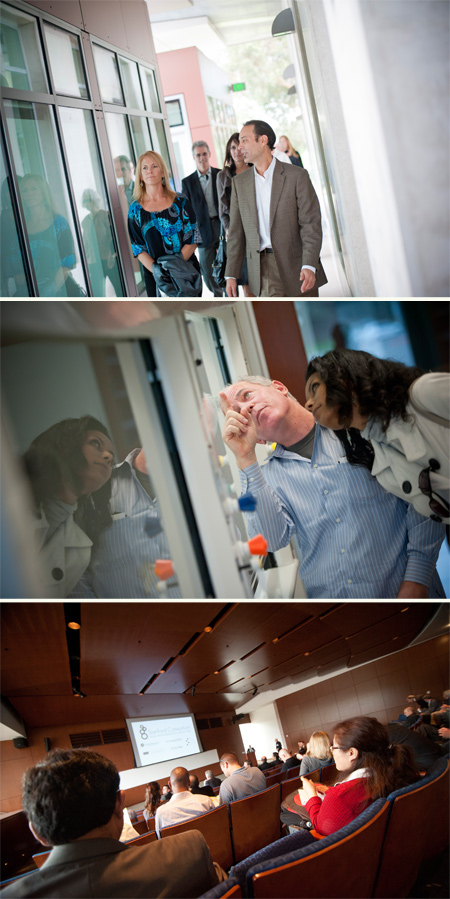
The actual structure, built with the latest “green” construction materials and technologies, is purposefully designed to encourage mingling of people and ideas. The auditorium is limited to 150 seats to promote engagement. Each floor features four laboratory “neighborhoods,” one in each corner of the building, to further a sense of community and shared mission. The labs, however, are connected by large, open spaces that encourage passing scientists to stop, talk and share. Whiteboard walls are there to jot down details and inspirations. There are special meeting rooms for formal conferences and for simply reading or writing. The administrative space is pooled: “No hierarchies, no silos,” in the words of Louis R. Coffman, the consortium’s vice president and chief operating officer.
Located on the UC San Diego campus on Torrey Pines Scenic Drive, adjacent to the Salk Institute, the consortium building is the ninth facility erected under the auspices of the California Institute for Regenerative Medicine (CIRM), a state agency established in 2004 with the passage of Proposition 71 and charged with overseeing $3 billion in tax-supported funding for stem cell research at California universities and research institutions. UC San Diego research alone has received more than $100 million in CIRM funding since 2005.
Jonathan Thomas, chair of CIRM’s Independent Citizens Oversight Committee, said the new consortium “is exactly what the people envisioned when they made that unprecedented commitment to science.”
Consortium president Dr. Edward W. Holmes went further, describing the new collaboratory as the first of its kind in the world, though perhaps a somewhat familiar notion locally. He and others praised the vision and leadership of UC San Diego Chancellor Marye Anne Fox, who was instrumental in the consortium obtaining a long-term lease of UC land on which to build. Eighteen of the 24 principal investigators who will be moving their research labs to the consortium building in coming weeks are from UC San Diego.
“The consortium carries forward the vision of early pioneers like Jonas Salk and Roger Revelle, who had a big idea about creating a collaborative research environment supported by a city,” said Richard Atkinson, president emeritus of the University of California and former chancellor of UC San Diego. “And that has happened, with numerous first-rate research institutions making their home here. I think I can safely, if boldly, say that science over the last 50 years has flourished in San Diego more than anywhere else in the world.”
It’s a sentiment echoed by San Diego Mayor Jerry Sanders when he spoke at the consortium opening celebration: “No other city has this formula for success down better.”
Ultimately, though, it’s the limitless potential of stem cell research that really excites people, offering hope to patients and their families who are suffering from degenerative diseases such as cancer, spinal cord injury and type 1 diabetes.
“We don’t just give money away,” said T. Denny Sanford, the South Dakota businessman and philanthropist who pledged $30 million to the consortium that now bears his name. “People like Malin Burnham, Irwin Jacobs, John Moores and myself invest in projects that improve lives and make the world a better place. We expect a return on that investment. And there’s no better way to do that than to invest in basic health research and the goals of this consortium.”

Scientists from Across UC San Diego Campus Will Combine Efforts at New Stem Cell Research Center
By Debra Kain
The opening of the Sanford Institute for Regenerative Medicine building is a remarkable achievement, made possible by the joint efforts of the partnering research institutions, the philanthropic vision of Denny Sanford, a major grant from the California Institute for Regenerative Medicine (CIRM), and a central location on the Torrey Pines Mesa provided by the University of California.
But it is the investigators and their work in coming years that will impact human health. Here are just a few of the 18 initial UC San Diego principal investigators whose labs will move to the new collaborator and a little about their diverse work in stem cell research:
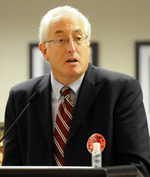
Larry Goldstein
Larry Goldstein, professor of cellular and molecular medicine at the UC San Diego School of Medicine and Howard Hughes Medical Institute Investigator is director of the UC San Diego Stem Cell Program. Along with Don W. Cleveland, professor and chair of cellular and molecular medicine at the UC San Diego School of Medicine and head of the Laboratory of Cell Biology at the Ludwig Institute for Cancer Research (LICR), and Samuel Pfaff at the Salk Institute, Goldstein’s lab has been funded by CIRM for work to develop a novel cellular therapy for ALS. Their work focuses on investigating how motor neurons form and make their predetermined connections between the spinal cord and the muscles in the body.
ALS is a devastating disease marked by motor neuron degeneration, leading to extreme muscle weakness, paralysis and death. Previous research supports the transplant of glial (cells surrounding the motor neurons) as a possible treatment for ALS, and studies of precursor cells that develop into a type of glial cell called astrocytes have shown promise in animal studies. The researchers hope to develop an ALS therapy based on using human embryonic stem cells to create astrocyte precursor cells for transplant into patients, where the hope is that the astrocytes would mature into new and healthy glial cells.
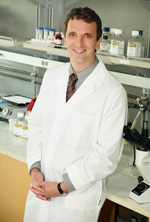
Dr. Martin Marsala
Dr. Martin Marsala, professor in the department of anesthesiology at the UCSD School of Medicine, hopes his research with human embryonic stem cells will one day soon allow people who are suffering from spinal ischemic injury to improve their motor function. Ischemia-induced paraplegia, often combined with spasticity and rigidity of muscles, is a serious complication that sometimes occurs when patients undergo a surgical procedure to repair an aortic aneurysm. These symptoms also occur in many patients with traumatic spinal injuries, and currently there is no treatment that leads to a permanent improvement in symptoms and ambulatory function. Marsala’s recent animal studies have demonstrated that spinal transplantation of rat and human neurons leads to significant improvement in motor function. A CIRM grant will fund additional experiments to characterize the therapeutic potential of human blastocyst-derived neuronal precursors when grafted to areas of spinal ischemic injury.
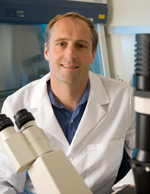
Karl Willert
Karl Willert, who also directs UC San Diego’s Human Stem Cell Core Facility, is studying WNT signaling in human pluripotent stem cells (hPSC). Wnt proteins represent a major class of growth factors, signals that instruct cells to assume specific behaviors and properties. Such growth factors regulate a multitude of developmental processes, including the growth and differentiation of hPSC – basic cells which provide the raw material for development of cell-based therapies, with potential to treat diseases such as cancer, cardiovascular disease and neurodegenerative disorders.
“We have developed powerful technologies that allow us to systematically dissect the role of Wnt signaling in regulating the behavior of human pluripotent stem cells,” said Willert. “By developing the means to isolate Wnt proteins, we are now able to examine their effects on stem cell growth and differentiation. In addition, we have established a novel technology platform with which we can investigate the effect of thousands of combinations of Wnt proteins and other biological molecules on these stem cells.” Willert hopes that by identifying Wnt mechanisms, the researchers will be able to develop valuable tools for use in cell replacement therapies.
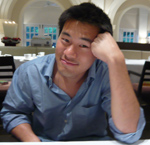
Eugene Yeo
Eugene Yeo, , assistant professor of cellular and molecular medicine in the School of Medicine, studies how adult differentiated cells can be “reprogrammed” to revert to earlier stages of development, where they exhibit properties similar to hESC. These reprogrammed cells, known as induced pluripotent stem cells or iPS cells, will be of tremendous benefit to disease-related biomedical research and therapy.
“Genes are regulated at many different levels, beginning with the production of RNAs in the nucleus, called transcription, and ending with the generation of proteins from processed RNAs in the cytoplasm, or translation,” said Yeo. He explained that while much is known about the transcriptional control of gene expression involved in maintaining the pluripotency of stem cells, relatively little is known about what happens to the RNAs after transcription, but before translation. A majority of this post-transcriptional regulation is controlled by proteins that recognize and bind these RNAs, called RNA binding proteins.
The goal of Yeo’s research is to produce a comprehensive map of RNAs that are bound by RNA binding proteins – important for pluripotency in stem cells – as well as to uncover how they are regulated. He and his colleagues will isolate and sequence millions of short nucleotides representing stretches of these RNAs and map them to the human genome. Combined with powerful computational tools developed in his lab, this will improve scientists’ understanding of the gene regulatory mechanisms in human pluripotent stem cells. This is expected to facilitate the development of new strategies for stem cell-based therapeutics and to enhance reprogramming of patient-specific adult cells.
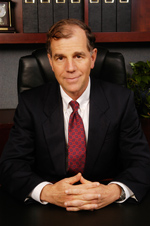
Dr. Dennis A. Carson
Researchers led by Moores UCSD Cancer Center Director Dr. Dennis A. Carson, professor of medicine, and Dr. Catriona Jamieson, assistant professor of medicine and director of the Cancer Stem Cell Research Program at the Moores UCSD Cancer Center have been awarded $20 million from CIRM over four years to develop novel drugs against leukemia stem cells.
“This award will fund a team – including researchers from disparate disciplines and key industry-academic partners – to develop novel therapies targeting leukemia stem cells, with the goal of moving to clinical trials in the shortest possible time frame,” said Jamieson, who was involved in a unique partnership between industry and academia that, in 2008, led to human clinical trials of a new drug for a rare class of blood diseases in just one year’s time. “Throughout California, scientists and physicians working in stem cell research are keeping their eyes on the goal of getting these promising therapies to patients as quickly, and safely, as possible.”
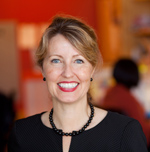
Dr. Catriona Jamieson
More than in any other cancer, scientists understand the molecular changes in the blood-forming cells that cause leukemia, but it has been difficult translating scientific results into new and effective therapies. Despite current drug therapies, small numbers of leukemia stem cells remain in patients, and continue to grow, spread and kill normal cells. Experimental results suggest that it will be possible to destroy leukemia stem cells using drugs or drug combinations with minimal damage to normal cells. The research team will develop six existing candidate molecules targeting leukemia stem cells – but not normal, blood-forming or hematopoietic stem cells – and these will be tested against both chronic and acute forms of leukemia.
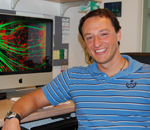
Alysson Muotri
Alysson Muotri, assistant professor of pediatrics, is working to help design a future drug-screening system for autism spectrum disorders (ASD) that employs human neurons. Muotri and colleagues are using induced pluripotent stem cells derived from skin cells taken from patients with autism spectrum disorders like Rett Syndrome to create “autistic” neurons. The researchers believe this first-ever human cell model of ASD will provide a novel effective and insightful tool for diagnosing and developing personalized treatments of autistic syndromes. The CIRM grant supports initial studies of how specific pharmacological compounds interact with ASD human neurons.
“These are experiments that have never been possible before,” said Muotri. “We hope they will help us better understand the causal molecular mechanisms of ASD, find possible biomarkers for the disease and identify specific therapeutic targets.”
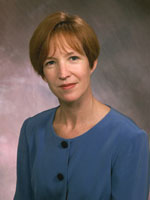
Shelley Halpain
In the Division of Biological Sciences, professor Shelley Halpain’s lab in the new stem cell research center will study the basic mechanisms that underlie neurodevelopment disorders such as autism and neurodegenerative diseases such as Alzheimer’s.
“Patients suffering from most neurodegenerative and neuropsychiatric disorders face a limited range of treatment options, due in part to a limited understanding of the fundamental biology underlying these diseases,” she said. “We are using advanced fluorescence microscopy and live-cell imaging techniques to investigate the sub cellular and molecular events that enable neural circuits to form correctly, to resist destabilizing influences during disease, and to repair themselves to favor functional recovery.”
By applying their knowledge of how nerve cells develop and are regulated from human induced pluripotent stem cells, scientists in Halpain’s laboratory hope to advance a deeper understanding of neurological disease and foster new therapeutic approaches relevant to patient treatment. “Our immediate objective is to develop human neuronal stem cell models that can be probed at a detailed cellular level using advanced imaging,” she said.
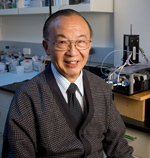
Shu Chien
The lab of bioengineering professor Shu Chien, who recently received a National Medal of Science at the White House, will be dedicated to further developing a technology that allows scientists to identify the best environments to grow stem cells. Creating these environments requires mixing many proteins in a wide range of combinations. The new technology allows researchers to test hundreds of them at once.
Scientists also will investigate the role these proteins, and other factors, including mechanical forces, play in stem cells’ fate. For example, a stiffer matrix can steer the cells toward becoming more like bone cells, while a softer matrix leads to brain-like ones.
Additional researchers moving to the new collaboratory include School of Medicine faculty members Kun Liang Guan, professor, department of pharmacology; David Brafman, post-doctoral researcher in the department of cellular and molecular medicine; Miles Wilkinson, professor, and Louise Laurent, assistant professor, both in the department of reproductive medicine; Mana Parast, assistant professor, and Tannishtha Reya, professor, both in the department of pathology; Maike Sander, professor, Albert La Spada, professor, and Kelly Frazer, professor, all from the department of pediatrics.
Share This:
You May Also Like
Stay in the Know
Keep up with all the latest from UC San Diego. Subscribe to the newsletter today.


